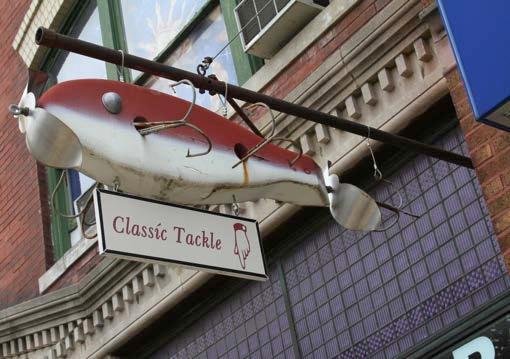
1 minute read
DESIGN GUIDELINES
by REA site
Recommended
• Projecting signs, attached perpendicular to the building in appropriate size, scale and design to the historic building.
Advertisement
• Awning or canopy signs affixed flat to the surface of the awning or canopy and of a size and scale such that does not dominate the awning/canopy.
• Historic signs contribute to the character of the district and should be maintained and preserved.
• Tablet signs integral with the buildings’ construction, often as part of masonry construction.
• Wall signs located at the transition between the storefront and upper stories. The size of the sign should respect the scale and character of the building.
• Murals and painted advertising signs are appropriate for a secondary wall face based on size, design and location and whether or not the face has been painted previously.
• Window signs directly adhered to the glass through painting, silkscreening or other applied material and of a size and scale relative to the size of the window itself. The size should allow a minimum of 80% visibility through the window.
• Sandwich board signs displayed only when the business is open.
Not Recommended
• Free-standing stationary and portable signs.
• Signs that obscure a window or door opening.
• Temporary signs or banners displayed more than 30 days.
• Internally illuminated signs.
• Changeable message board signs.
• Signs that serve as advertising (including but not limited to phone numbers, web sites, listing of more than three services or products, etc.), especially when not related to an onsite business.
• Box signs.
• Flashing signs.
• Ground mounted or pole signs.
• Obscuring architectural features with the sign.
• Attaching signs to historic materials, in particular where the attachment will damage materials and be irreversible.
• Billboard.




